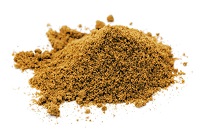Evaluation of antibacterial potential of Trikatu churna and its ingredients: An in vitro study
Keywords:
Antibacterial activity, Trikatu churnaAbstract
Herbal medicines are being used increasingly as dietary supplements to fight or prevent common disease. The dried fruits of Piper nigrum L. (Piperaceae), Piper longum L. (Piperaceae) and rhizome of Zingiber officinale Roscoe. (Zingiberaceae) were powdered and mixed together in equiproportions to get a polyherbal formulation, Trikatu churna. The aqueous, ethanol, methanol and acetone extracts of these plant’s fruits and Trikatu churna were prepared and antibacterial activities were tested by disc diffusion method against enteric bacterial pathogens such as Escherichia coli, Staphylococcus aureus, Pseudomonas aeruginosa, Proteus vulgaris, Staphylococcus epidermidis, Salmonella typhi, Salmonella typhimurium and Enterobacter aerogenes. The extracts of Piper longum, Piper nigrum and Zingiber officinale were found antibacterial to all bacterial pathogen tested. Trikatu churna exhibited potent antibacterial activity; this might be due to the multifunctional effect of all the three plant ingredients of Trikatu churna. Antibacterial activity of Trikatu churna and its ingredients was carried out in attempt to support the use of Trikatu churna for the treatment of enteric bacterial infections.
References
WHO, General guidelines for
methodologies on research and evaluation
of traditional medicine, World Health
Organization, Geneva, 2000.
Parle M, Bansal N. Herbal Medicine: Are
they safe? Nat Prod Red, 2005; 5(1):6-16.
Anonymous. Indian Pharmacopoeia,
Government of India, III-Edition, New
Delhi, Appendix IV, 1985; 90.
Chopra RN, Nayar SL, Chopra IC, In
Glossary of Indian Medicinal Plants,
Publications and Information Directorate,
CSIR, New Delhi, 1992; 132-210.
George Watt. In a dictionary of the
economic products of India, Periodical
experts, 42-D, Vivek Vihar, Delhi, 1972;
-247.
Lodha R, Kabra SK. Bronchial asthama In
Scientific Basis For Ayurvedic Therapies,
Edited by Lakshmi Chandra Mishra.,
Published by CRC Press, 2003.
Namjoshi AM. Ayurvedic formulary of
India, Controller of Publications, Delhi,
; 85-95.
Sivarajan VV, Indira Balachandran.
Ayurvedic drugs and their plant sources.
Published by Mohan Primalini for Oxford
and IBH Publishing Company, PVT.
LTD, New Delhi, 1996.
Kokate CK, Chaudhari GN, Nimbkar AY.
Search for anthelmintics of plant origin:
activities of volatile principles of Acorus
calamus and Piper longum against
Ascaris lumbricoides, Asian Symposium
on Medicinal Plants and Spices,
Conference, Bangkok (Thailand), 1980;
-19.
Kiritikar KR, Basu BD. Indian medicinal
plants. 2nd edn. International book
distribution Vol. III. Dehradun, 1987;
–1666.
Parekh J, Nair R, Chanda S. Preliminary
screening of some folkloric plants from
Western India for potential antimicrobial
activity. Indian J. Pharmacol. 2005; 37:
-409.
Parekh J, Chanda S. In vitro screening of
antibacterial activity of aqueous and
alcoholic extracts of various Indian plant
species against selected pathogens from
Enterobacteriaceae. Afr J Microbiol
Research. 2007; 1(6):92-99.
Harborne JB. Phytochemical Methods. A
guide to modern techniques of plant
analysis, 3rd Edn. Chapman and Hall,
London, 1998; 235.
Khandelwal KR. Preliminary
photochemical screening, in: Practical
Pharmacognosy Techniques and
Experiments. 149-156, 8th edn. Nirali
Publication, Pune, 2001.
NCCLS (National Committee for Clinical
Laboratory Standards), 2002. Performance
Standards for antimicrobial susceptibility
testing. 8th Informational Supplement.
M100 S12. National Committee for Clinical
Laboratory Standards, Villanova, Pa, 2002.
Elizabeth and Williamsons, Major herbs
of Ayurveda, Churchill living stone,
Elsevier Science Ltd, London, 2002.
Kapoor LD. Handbook of ayurvedic
medicinal plants. 1st Edn, CRC Press
Boca Raton (FL), 1990; 17-342.
Srinivasan D, Nathan S, Suresh T,
Perumalsamy O, Antimicrobial activity of
certain Indian medicinal plants used in
folkloric medicine. J Ethnopharmacol,
; 74:217-220.
Ali MA, Alam MN, Yeasmin SM, Khan
AM, Sayeed MA, Antimicrobial
screening of different extracts of Piper
longum Linn. Res J Agri Biol Sci, 2007;
(6):852-857.



